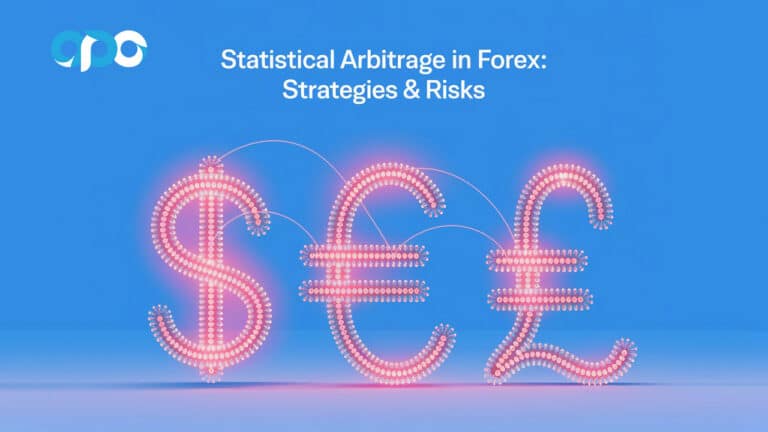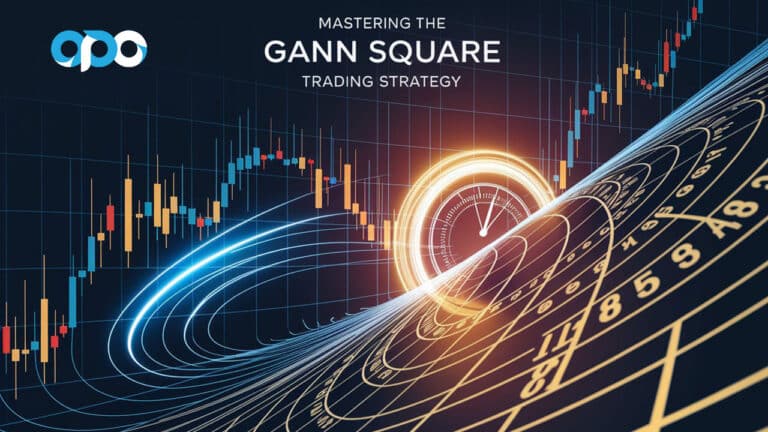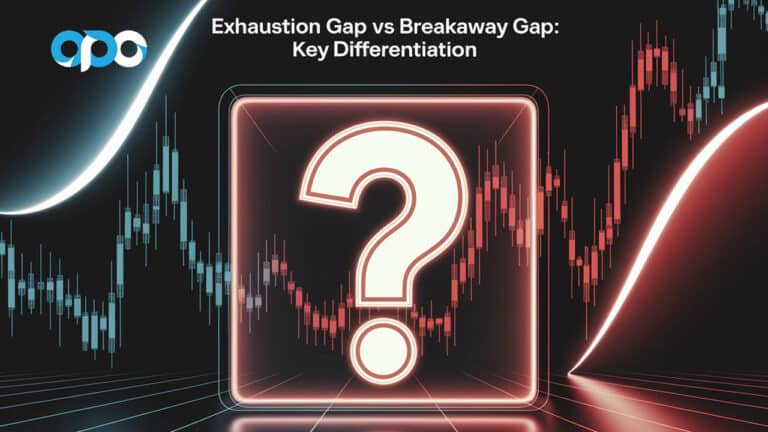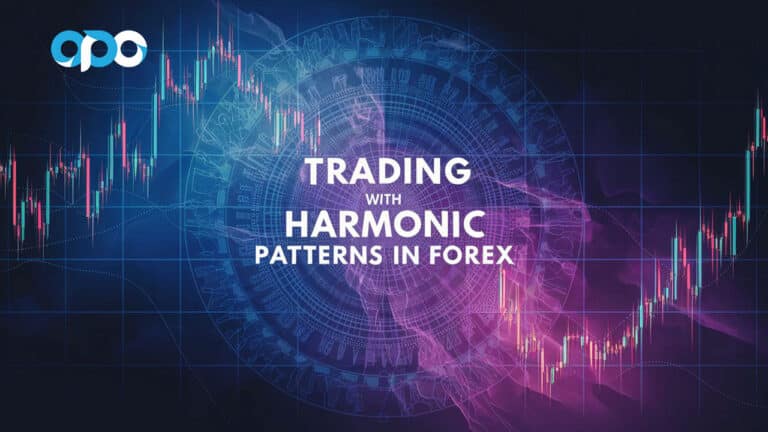Did you know that over 70% of successful traders swear by a specific trading strategy? In the competitive world of forex trading, choosing between Elliott Wave and Price Action can be the pivotal decision that defines your success. This comprehensive guide on elliott wave vs price action will unveil the strengths, weaknesses, and optimal applications of each method, empowering you to make informed trading decisions. Whether you’re navigating the complexities of market trends or seeking straightforward trading signals, understanding the nuances between price action vs elliott wave strategies is essential. Plus, discover how partnering with a regulated forex broker like Opofinance can elevate your trading journey to new heights.
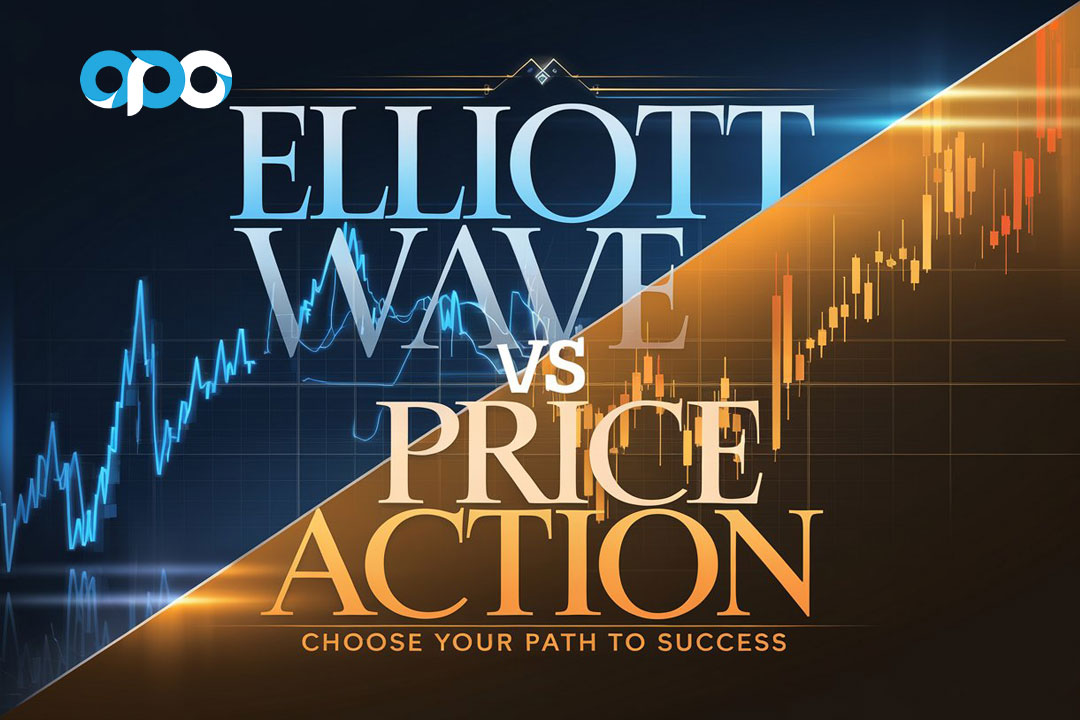
Understanding Elliott Wave Theory
Elliott Wave Theory, introduced by Ralph Nelson Elliott in the 1930s, is a sophisticated method of technical analysis used by traders to predict market trends and cycles. This theory is grounded in the belief that market prices unfold in predictable patterns, reflecting the collective psychology of investors.
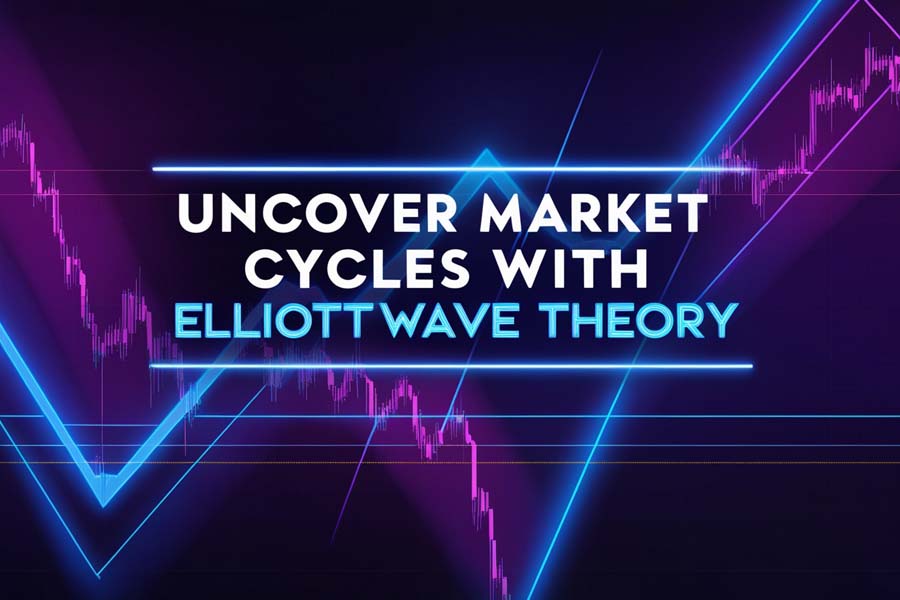
Key Features of Elliott Wave Theory
- Wave Patterns: At its core, Elliott Wave Theory identifies repetitive cycles of five waves in the direction of the prevailing trend, followed by three corrective waves. These waves represent the natural ebb and flow of market sentiment.
- Fractals: Elliott Waves are fractal in nature, meaning that patterns repeat on various time scales—from minutes to decades. This fractal characteristic allows traders to analyze markets comprehensively across different periods.
- Psychological Insights: The theory emphasizes the psychological aspect of trading, suggesting that waves represent shifts in investor sentiment. Understanding these shifts can provide insights into future price movements.
Elliott Wave Theory offers a structured and analytical approach to understanding market dynamics, making it a powerful tool for traders aiming to anticipate future price movements with greater accuracy.
Advantages of Elliott Wave Theory
- Predictive Power: When applied correctly, Elliott Wave Theory can forecast significant market movements, providing traders with potential entry and exit points.
- Comprehensive Framework: The theory offers a holistic view of market trends, incorporating both upward and downward movements within its wave structures.
- Versatility: Elliott Wave can be applied to various financial instruments, including forex, stocks, commodities, and indices, making it a versatile tool for traders.
Potential Drawbacks
- Subjectivity: One of the main criticisms of Elliott Wave Theory is its subjective nature. Different traders might interpret wave counts differently, leading to inconsistent results.
- Complexity: Mastering Elliott Wave requires a deep understanding of its principles and patterns, which can be daunting for beginners.
- Time-Consuming: Analyzing and identifying wave patterns can be time-consuming, potentially limiting its practicality for traders who prefer quicker analysis methods.
Read More: Elliott Wave vs Neo Wave
Decoding Price Action Trading
Price Action Trading is a strategy that relies solely on the price movements of an asset to make trading decisions, without the use of lagging indicators. It involves reading and interpreting raw price data to identify trading opportunities, making it a favorite among many traders for its simplicity and effectiveness.
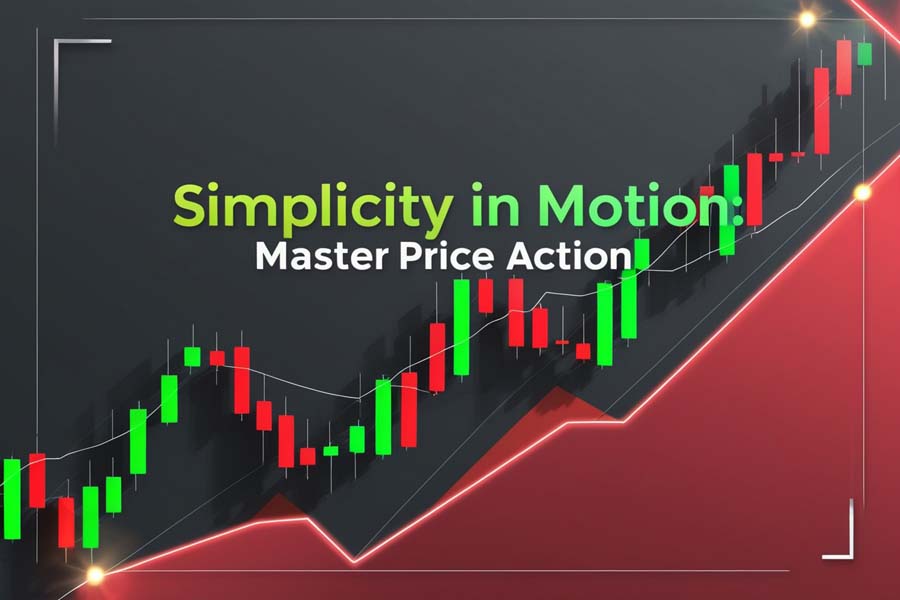
Key Features of Price Action Trading
- Simplicity: Unlike other trading strategies that rely on complex indicators, Price Action focuses purely on price movements and patterns, eliminating the clutter of additional tools.
- Flexibility: This method can be applied to any timeframe and market, providing traders with the adaptability to suit their specific trading styles and schedules.
- Immediate Feedback: Price Action Trading offers real-time insights based on current price behavior, allowing for swift decision-making.
Price Action Trading empowers traders with a clear and direct view of the market, enhancing decision-making through pure price data analysis.
Advantages of Price Action Trading
- Clarity: By focusing on price alone, traders can avoid the confusion that often comes with multiple indicators, leading to more straightforward trading signals.
- Adaptability: Price Action can be seamlessly integrated with other trading strategies, including Elliott Wave, to enhance overall trading performance.
- Real-Time Analysis: Since it relies on current price movements, traders can respond promptly to market changes without waiting for indicator confirmations.
Potential Drawbacks
- Requires Skill: Successfully interpreting price action requires a keen eye and a deep understanding of market behavior, which can take time to develop.
- Less Predictive: Unlike Elliott Wave Theory, which attempts to predict future price movements, Price Action is more reactive, focusing on current market conditions.
- Subjectivity: Similar to Elliott Wave, Price Action can also be subjective, as different traders might interpret the same price movements differently.
Elliott Wave vs Price Action: A Comparative Analysis
When comparing elliott wave vs price action, it’s essential to evaluate various aspects to determine which strategy aligns best with your trading style and objectives. Both methods offer unique advantages and can be powerful tools when used correctly.
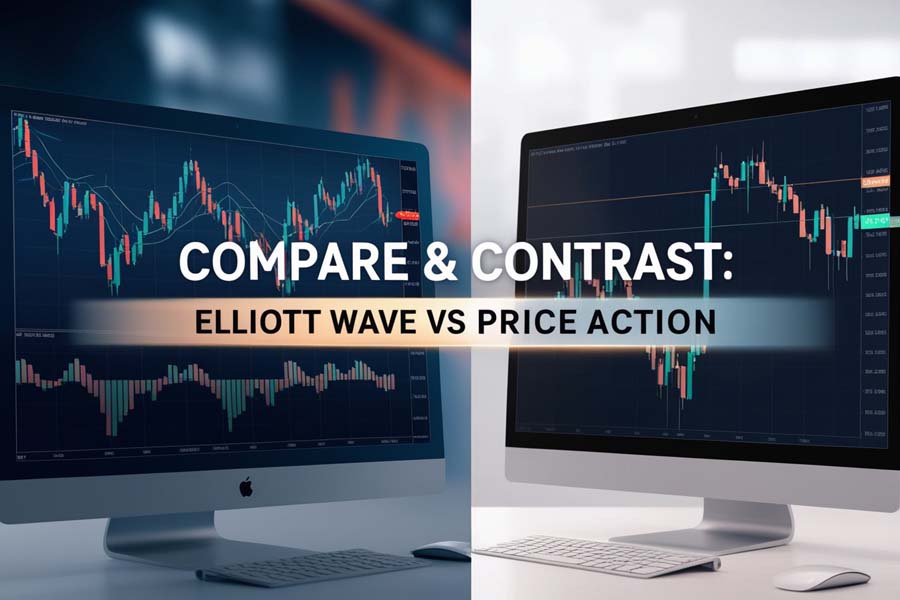
Accuracy and Predictability
| Aspect | Elliott Wave | Price Action |
| Predictive Power | High when accurately applied; can forecast significant market movements. | Moderate; relies on current price signals without predicting future movements. |
| Subjectivity | High; different interpretations can affect accuracy. | Moderate; still subject to trader interpretation but more straightforward. |
| Consistency | Variable; depends on the trader’s skill and experience. | Generally consistent; based on observable price behavior. |
- Elliott Wave: Offers a structured framework that can predict significant market movements. However, its subjectivity can lead to varying interpretations, potentially affecting accuracy.
- Price Action: Relies on clear and observable price signals, which can be more objective. While it may not offer the same predictive depth as Elliott Wave, it provides reliable entry and exit points based on current market conditions.
Complexity and Learning Curve
| Aspect | Elliott Wave | Price Action |
| Learning Difficulty | High; requires understanding of wave structures and psychological factors. | Moderate; easier to grasp but still requires skill in interpreting price movements. |
| Mastery Time | Long; takes significant time to master wave patterns and degrees. | Moderate; quicker to learn foundational concepts but mastery takes practice. |
| Resource Requirement | High; extensive study materials and practice needed. | Moderate; ample resources available, but skill development is essential. |
- Elliott Wave: Requires a comprehensive understanding of wave structures, patterns, and the underlying psychological factors driving market movements. This complexity can be challenging for beginners.
- Price Action: Generally easier to grasp, focusing on observable price movements without the need for intricate theories or patterns. This makes it more accessible for traders of all experience levels.
Flexibility in Different Markets
| Market Type | Elliott Wave | Price Action |
| Forex | Highly effective with appropriate wave counts. | Equally effective; adaptable to currency pairs. |
| Stocks | Effective but may require adjustment for volatility. | Highly adaptable; suitable for various stock movements. |
| Commodities | Useful for trend analysis but needs flexibility. | Flexible and effective across different commodity markets. |
| Cryptocurrencies | Emerging applicability; requires adaptation. | Highly adaptable; suits volatile crypto markets well. |
- Elliott Wave: Effective across various markets, including forex, stocks, and commodities. However, it may require adjustments to wave counts based on specific market conditions and timeframes.
- Price Action: Highly adaptable and can be applied to any market or timeframe without significant modifications, making it a versatile tool for traders.
Timeframes Suitability
| Timeframe | Elliott Wave | Price Action |
| Short-Term (Intraday) | Applicable but requires precise wave counting. | Highly effective; provides timely signals. |
| Medium-Term (Swing Trading) | Effective with accurate wave analysis. | Ideal for identifying trend reversals and continuations. |
| Long-Term (Position Trading) | Highly effective for major trend identification. | Suitable for monitoring broad market trends. |
| Multiple Timeframes | Can be applied across different timeframes for comprehensive analysis. | Equally effective; allows for alignment of signals across timeframes. |
- Elliott Wave: Can be applied to multiple timeframes, from short-term trading to long-term investing. Its fractal nature allows for analysis across different periods.
- Price Action: Equally effective across all timeframes, offering versatility for day traders, swing traders, and long-term investors alike.
Risk Management
| Aspect | Elliott Wave | Price Action |
| Stop-Loss Placement | Based on wave counts and Fibonacci levels. | Based on support and resistance levels. |
| Risk Assessment | Involves predicting wave direction and magnitude. | Involves reacting to price movements and patterns. |
| Predictive Risk | Higher; relies on accurate wave interpretation. | Lower; focuses on current price behavior. |
- Elliott Wave: Incorporates risk management through wave structures and patterns, allowing traders to set stop-loss and take-profit levels based on wave counts and Fibonacci ratios.
- Price Action: Utilizes support and resistance levels, trend lines, and candlestick patterns to manage risk, providing clear points for stop-loss and take-profit orders.
Market Conditions
| Condition | Elliott Wave | Price Action |
| Trending Markets | Thrives; wave patterns are more pronounced. | Highly effective; clearly identifies trend direction. |
| Sideways/Ranging Markets | May become ambiguous; wave counts can be unclear. | Effective; focuses on price behavior within ranges. |
| Volatile Markets | Can adapt but requires flexible wave counting. | Highly adaptable; excels in capturing rapid price movements. |
| Consolidating Markets | Challenging; wave patterns may be less defined. | Effective; identifies breakouts and consolidations. |
- Elliott Wave: Thrives in trending markets where wave patterns are more pronounced. In sideways or consolidating markets, wave counts can become ambiguous.
- Price Action: Effective in both trending and ranging markets, as it focuses on price behavior rather than predefined patterns.
Both strategies have their strengths and can be tailored to fit different trading preferences and market environments, making them valuable tools in a trader’s arsenal.
Read More: elliott wave and rsi
Choosing the Right Strategy for Your Trading Style

Selecting between elliott wave vs price action depends largely on your personal trading style, goals, and preferences. Here are key factors to consider when making your decision:
Assessing Your Trading Goals
| Goal Type | Elliott Wave | Price Action |
| Long-Term Investors | Benefit from identifying major market trends and long-term price movements. | Benefit from monitoring broad market trends and making informed long-term decisions based on price behavior. |
| Short-Term Traders | Can leverage wave patterns for quick trend reversals and continuations. | Prefer immediate signals for quick trades, allowing for more frequent entry and exit points. |
| Swing Traders | Use wave structures to identify medium-term trends and potential reversals. | Utilize price action patterns to capture swing trades within established trends. |
| Day Traders | May find it challenging due to the complexity of wave counts on short timeframes. | Highly suitable; provides real-time signals for intraday trading. |
| Position Traders | Ideal for capturing major market movements over extended periods. | Suitable for maintaining positions based on long-term price behavior and trends. |
- Long-Term Investors: May benefit from Elliott Wave’s ability to identify major market trends and long-term price movements, providing a strategic outlook for investments.
- Short-Term Traders: Might prefer Price Action’s immediate signals for quick trades, allowing for more frequent entry and exit points within shorter timeframes.
Risk Tolerance
| Risk Level | Elliott Wave | Price Action |
| High Risk Tolerance | May prefer Elliott Wave for its predictive nature and potential for higher returns. | May prefer Price Action for its clear signals and straightforward risk management. |
| Moderate Risk Tolerance | Balanced approach using wave structures and price signals for informed risk management. | Effective risk management through support and resistance levels. |
| Low Risk Tolerance | Requires disciplined risk management and accurate wave interpretation to minimize losses. | Offers more straightforward risk management, making it suitable for conservative traders. |
- Elliott Wave: Can involve higher risk due to its predictive nature and potential for misinterpretation. Proper risk management and experience are crucial when using this strategy.
- Price Action: Offers more straightforward risk management through clear support and resistance levels, making it suitable for traders with varying risk tolerances.
Time Commitment
| Time Commitment | Elliott Wave | Price Action |
| High Availability | Requires significant time investment to analyze wave structures and patterns accurately. | Generally less time-consuming, allowing for quicker analysis and decision-making. |
| Limited Availability | May find it challenging to dedicate the necessary time for comprehensive wave analysis. | Ideal for traders with limited time, as it allows for efficient trading decisions based on price movements. |
| Flexible Schedule | Can adapt wave analysis to fit various schedules with proper time management. | Highly adaptable; can be incorporated into different trading schedules seamlessly. |
- Elliott Wave: Requires significant time investment to analyze wave structures and patterns accurately. Traders need to dedicate time to study and practice to master this method.
- Price Action: Generally less time-consuming, allowing for quicker analysis and decision-making, which is ideal for traders with limited time to monitor the markets constantly.
Personal Preference
| Preference | Elliott Wave | Price Action |
| Analytical Approach | Suits traders who prefer a more analytical and structured method. | Appeals to traders who favor an intuitive and straightforward approach. |
| Technical Expertise | Demands a higher level of technical expertise and understanding of market psychology. | More accessible to traders with varying levels of technical knowledge. |
| Methodical Trading | Ideal for methodical traders who enjoy detailed market analysis. | Suitable for traders who prefer clear and direct price signals without extensive analysis. |
| Adaptability | Requires adaptability in wave counting and interpretation based on market conditions. | Highly adaptable to different market scenarios without significant modifications. |
- Analytical vs. Intuitive: If you prefer a more analytical and structured approach, Elliott Wave may suit you better. On the other hand, if you favor an intuitive and straightforward method, Price Action could be more appealing.
- Technical Expertise: Elliott Wave demands a higher level of technical expertise and understanding of market psychology, while Price Action is more accessible to traders with varying levels of technical knowledge.
Understanding your trading objectives, risk tolerance, and personal preferences is crucial in selecting the most suitable strategy for your trading endeavors.
Integrating Elliott Wave and Price Action for Optimal Results
While elliott wave vs price action presents distinct approaches, integrating both strategies can significantly enhance your trading effectiveness. By leveraging the strengths of each method, traders can achieve a more comprehensive and nuanced understanding of the market.

Combining Strengths
- Elliott Wave: Use it to identify the broader market trend and potential reversal points. The wave structures provide a macro view of market movements, helping traders anticipate major shifts.
- Price Action: Apply it for precise entry and exit points within the identified wave structure. Price Action can offer the micro-level signals needed to execute trades effectively within the larger wave framework.
Practical Applications
- Wave Confirmation: Use Price Action patterns to confirm Elliott Wave counts. For instance, a bullish engulfing candle within a corrective wave can validate the wave count and signal a potential continuation of the trend.
- Risk Management: Implement Price Action support and resistance levels to set stop-loss and take-profit orders within the wave framework. This ensures that risk is managed effectively based on both wave patterns and price behavior.
Enhanced Decision-Making
- Comprehensive Analysis: Combining both strategies allows for a more thorough analysis of market conditions, reducing the likelihood of missing critical signals or misinterpreting market movements.
- Increased Confidence: When both Elliott Wave and Price Action signals align, traders can have greater confidence in their trading decisions, leading to more consistent and profitable outcomes.
By integrating the strengths of both strategies, traders can achieve a more holistic view of the market, enhancing their ability to make informed and effective trading decisions.
Read More: Elliott Wave Strategy
Pro Tips: Advanced Strategies for Elliott Wave and Price Action Traders
For those looking to elevate their trading game, here are some advanced strategies to master both Elliott Wave and Price Action Trading:
Elliott Wave Pro Tips
- Multiple Timeframe Analysis: Analyze wave patterns across different timeframes to gain a holistic market view. This helps in aligning short-term trades with long-term trends, enhancing the accuracy of wave counts.
- Wave Extensions and Truncations: Identify extended waves to spot potential trend continuations or reversals. Recognizing when a wave is extending beyond typical Fibonacci ratios can signal significant market movements.
- Fibonacci Integration: Use Fibonacci ratios to project wave lengths and target levels. Integrating Fibonacci retracements and extensions with Elliott Wave counts can provide precise price targets and support/resistance levels.
- Wave Degree Identification: Understanding the different degrees of waves (from Grand Supercycle to Subminuette) can help in accurately counting waves and predicting future market movements.
- Intermarket Analysis: Compare wave patterns across related markets (e.g., currencies, commodities) to validate wave counts and identify potential correlations that can influence price movements.
Price Action Pro Tips
- Candlestick Patterns: Master advanced candlestick formations like Doji, Engulfing, and Harami for precise signals. Recognizing these patterns can provide clear indications of market sentiment and potential reversals.
- Order Flow Analysis: Incorporate order flow data to understand the underlying market dynamics. Analyzing the flow of buy and sell orders can offer deeper insights into price movements and potential trends.
- Volume Confirmation: Use volume indicators to validate price movements and trend strength. High volume during price moves can confirm the legitimacy of the trend, while low volume may indicate potential reversals.
- Trend Line and Channel Trading: Utilize trend lines and channels to identify and trade within established market trends. These tools can help in setting realistic price targets and managing risk effectively.
- Support and Resistance Zones: Focus on key support and resistance zones to identify potential entry and exit points. Understanding these zones can aid in anticipating price reactions and planning trades accordingly.
Implementing these advanced techniques can significantly enhance your trading precision and profitability, allowing you to navigate the markets with greater confidence and expertise.
Opofinance Services: Your Partner in Forex Trading Success
When it comes to executing your chosen trading strategy, partnering with a reliable broker is paramount. Opofinance, an ASIC-regulated broker, offers a suite of services tailored to both Elliott Wave and Price Action traders, ensuring a seamless and secure trading experience.
Why Choose Opofinance?
- Social Trading Service: Connect with a community of successful traders, share strategies, and learn from real-time insights. This collaborative environment fosters continuous learning and improvement, allowing you to benefit from the collective wisdom of experienced traders.
- MT5 Broker Listing: Officially featured on the MT5 brokers list, providing access to advanced trading tools and platforms. The MT5 platform offers superior charting capabilities, automated trading options, and a user-friendly interface, enhancing your trading efficiency.
- Safe and Convenient Deposits and Withdrawals: Experience seamless transactions with multiple secure payment options. Opofinance ensures that your funds are handled with the utmost security, providing peace of mind and financial flexibility.

Additional Benefits
- Regulated Environment: As an ASIC-regulated broker, Opofinance adheres to strict regulatory standards, ensuring transparency, fairness, and security in all trading activities.
- Customer Support: Benefit from dedicated customer support that is available to assist you with any queries or issues, ensuring a smooth and hassle-free trading experience.
- Educational Resources: Access a wealth of educational materials, including webinars, tutorials, and market analysis, to enhance your trading knowledge and skills.
Opofinance stands out as a trusted broker, ensuring a safe and efficient trading environment for all your forex endeavors. Whether you’re leveraging Elliott Wave Theory or Price Action Trading, Opofinance provides the tools and support necessary for your trading success.
Conclusion
Navigating the forex market requires a strategic approach tailored to your unique trading style and objectives. Both Elliott Wave and Price Action offer valuable methodologies, each with its distinct advantages. By understanding their core principles, comparative strengths, and how they can complement each other, you can make informed decisions that align with your trading goals. Moreover, leveraging the services of a trusted broker like Opofinance can further enhance your trading journey, providing the tools and support necessary for success. Whether you lean towards the analytical depth of Elliott Wave or the straightforward signals of Price Action, the key lies in consistent application and continuous learning.
Embrace the strategy that resonates with your trading philosophy, continuously refine your skills, and partner with a reliable broker to unlock your full trading potential. Your path to forex trading success begins with the right strategy and the right support—make the informed choice today.
Key Takeaways
- Elliott Wave offers a structured approach with deep market insights, ideal for traders seeking to anticipate major market trends and movements.
- Price Action provides simplicity and flexibility, making it suitable for traders of all levels who prefer clear and direct price signals.
- Integration of both strategies can lead to more informed and effective trading decisions, combining the predictive power of Elliott Wave with the real-time signals of Price Action.
- Opofinance enhances your trading experience with its regulated services, social trading platform, and secure transaction methods, making it an excellent choice for forex traders.
Choosing the right strategy and partnering with the right broker are critical steps towards achieving sustained trading success. By understanding and leveraging the strengths of both Elliott Wave and Price Action Trading, you can optimize your trading approach and maximize your profitability.
How can I effectively combine Elliott Wave and Price Action in my trading strategy?
Integrating Elliott Wave with Price Action involves using wave structures to identify the broader trend and employing price action signals for precise trade entries and exits. For example, after identifying a corrective wave using Elliott Wave Theory, you can look for specific price action patterns like pin bars or engulfing candles to time your trades more accurately. This combination allows traders to benefit from the predictive insights of Elliott Wave while utilizing the real-time signals provided by Price Action, resulting in a more robust and informed trading strategy.
What are the common pitfalls when using Elliott Wave Theory?
One common pitfall is the subjective interpretation of wave counts, which can lead to incorrect predictions and inconsistent trading results. Additionally, overcomplicating the wave structures or ignoring market fundamentals can result in flawed analysis. Traders may also fall into the trap of trying to fit every price movement into a wave pattern, leading to overanalysis and decision paralysis. It’s essential to combine Elliott Wave with other analytical tools, maintain disciplined risk management, and remain flexible to adapt to changing market conditions to avoid these pitfalls.
Can Price Action Trading be automated effectively?
Yes, Price Action Trading can be automated using algorithmic trading systems that recognize specific price patterns and signals. However, it requires precise coding and thorough testing to ensure that the algorithms accurately interpret price movements. While automation can enhance efficiency by executing trades based on predefined criteria, it’s crucial to monitor automated strategies regularly to adapt to changing market conditions and avoid potential technical glitches. Combining automated Price Action strategies with manual oversight can provide the best of both worlds, ensuring consistent and reliable trading performance.



